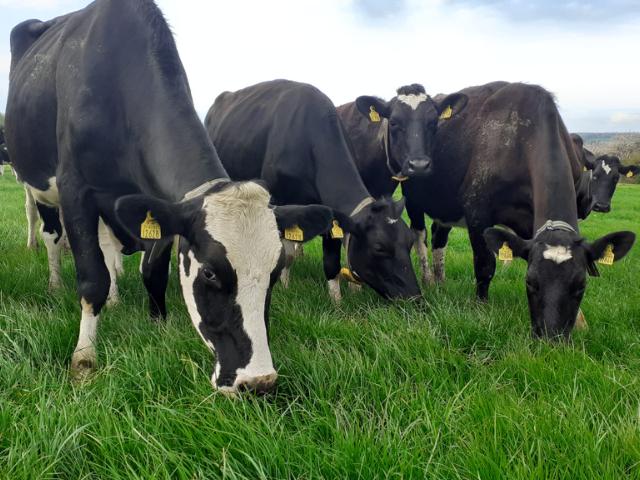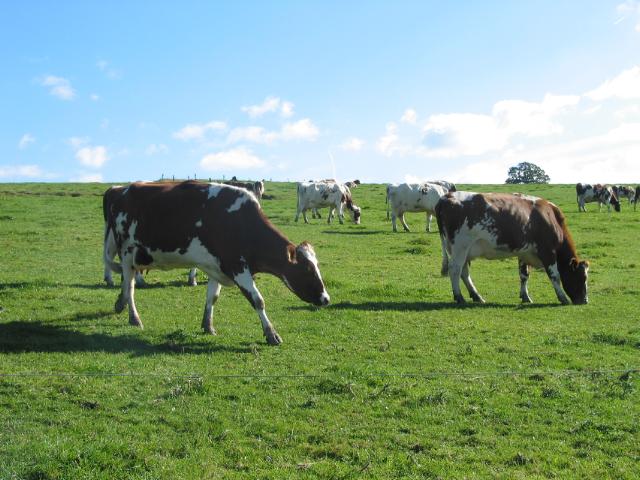
Grass Management For Maximum Utilisation
Managing Grass For Maximum Utilisation
Grass Utilisation Drives Profitability
Grass utilisation on farms is quite variable with utilisation figures ranging from 5 to 12 tonnes DM per hectare across production systems nationwide. Practical experience shows that certain perennial ryegrass varieties are easier to graze than others and this has been demonstrated in research trials at Teagasc too. Thus, variety and mixture selection when reseeding has a considerable effect on how much grass is utilised on farm.
At DLF we have begun our own on-farm variety grazing trial with 4 of our Grass Partners around the country. A notable trend to date is that, on average, tetraploid varieties are achieving much lower post-grazing residuals than diploid varieties. This suggests that including a higher proportion of tetraploid varieties in grazing mixtures should lead to better grazing efficiency and greater grass utilisation on farm.
On the back of our own research and the PPI star ratings we have produced the unique DLF 4N Grazer, an all-tetraploid mixture designed to maximise grass utilisation on Irish farms. 4N Grazer combines two 5-star grazing varieties, Xenon and Aspect, with Nashota for a mixture that is sure to hit all your grazing targets and provide quality forage throughout the season ensuring maximum grass utilisation.
Apart from selecting the best grazing varieties, there are a couple of management guidelines that should be followed to maximise grass utilisation. If we consider a grass plant, its life cycle can be divided into two distinct stages – the vegetative stage and the reproductive stage. During the vegetative stage the plant develops leaves to capture energy from the sun in preparation for the reproductive stage. In the vegetative stage the plant consists primarily of leaves that are highly digestible and rich in protein and energy. The perennial ryegrass plant will only ever have 3 living leaves at any one time. Once a fourth leaf appears, the first leaf will die, and the plant will enter the reproductive stage. During reproduction the plant begins to lignify and produce a tough stem that will eventually support a seedhead. During this stage yield will greatly increase but this comes at a significant cost in quality.
The ideal time to graze a perennial ryegrass sward, therefore, is when most plants are at the 3-leaf stage. This strikes the best balance between yield and quality and will make utilisation by the cow easier. In the middle of the grass growing season this third leaf typically appears in 18 – 21 days when pre-grazing covers are ~1,400kg DM/ha, hence the standard 3-week intervals in rotational grazing systems.

Grazing the sward down to a residual height of ~4cm ensures maximum utilisation of the forage grown but it also leaves enough of an energy reserve in the plant to allow it to recover from grazing and begin its growth cycle again. A post-grazing residual of ~4cm also prevents the accumulation of dead and stemmy material that is difficult to graze at the base of the sward. It is especially important to hit this post-grazing target in the first couple of rotations as once this tough material is allowed to develop due to lax grazing its effect on quality will get progressively worse in each subsequent rotation. This will seriously impact grass utilisation over the course of the grazing season.
The pre- and post-grazing sward height/cover are crucial elements in keeping the balance between grass yield and quality with this balance determined by the 3-leaf principle of grass growth.
Did You Know?
- 1 tonne of grass DM costs ~€70 to produce – relatively cheap compared to grass silage (€160/tonne DM) and concentrate (€250/tonne DM)
- Increasing the proportion of grazed grass in the diet by 10% can lead to a 2.5 cent reduction in the cost of producing 1 litre of milk
- Each additional tonne of DM utilised is worth approximately €181/ha
- Could reduce GHG emissions intensity by 4%
Managing Grass For Maximum Utilisation
Apart from selecting the best grazing varieties, there are a couple of management guidelines that should be followed to maximise grass utilisation. If we consider a grass plant, its life cycle can be divided into two distinct stages – the vegetative stage and the reproductive stage. During the vegetative stage the plant develops leaves to capture energy from the sun in preparation for the reproductive stage. In the vegetative stage the plant consists primarily of leaves that are highly digestible and rich in protein and energy. The perennial ryegrass plant will only ever have 3 living leaves at any one time.
Once a fourth leaf appears, the first leaf will die, and the plant will enter the reproductive stage. During reproduction the plant begins to lignify and produce a tough stem that will eventually support a seedhead. During this stage yield will greatly increase but this comes at a significant cost in quality.
The ideal time to graze a perennial ryegrass sward, therefore, is when most plants are at the 3-leaf stage. This strikes the best balance between yield and quality and will make utilisation by the cow easier. In the middle of the grass growing season this third leaf typically appears in 18 – 21 days when pre-grazing covers are ~1,400kg DM/ha, hence the standard 3-week intervals in rotational grazing systems.
Grazing the sward down to a residual height of ~4cm ensures maximum utilisation of the forage grown but it also leaves enough of an energy reserve in the plant to allow it to recover from grazing and begin its growth cycle again. A post-grazing residual of ~4cm also prevents the accumulation of dead and stemmy material that is difficult to graze at the base of the sward. It is especially important to hit this post-grazing target in the first couple of rotations as once this tough material is allowed to develop due to lax grazing its effect on quality will get progressively worse in each subsequent rotation.
This will seriously impact grass utilisation over the course of the grazing season. The pre- and post-grazing sward height/cover are crucial elements in keeping the balance between grass yield and quality with this balance determined by the 3-leaf principle of grass growth.